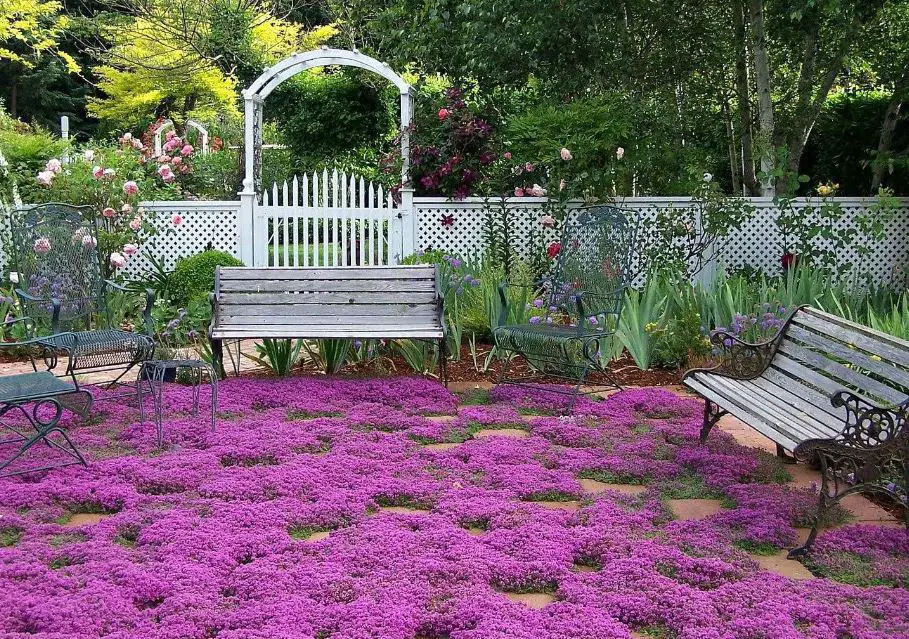We are using less water, thus xeriscaping is becoming more and more popular. The water-hungry grass is being replaced with plants that can withstand drought by many gardeners. Thyme is a great option as a grass substitute. Why is thyme a great alternative to grass, and how can you utilize it as a replacement for a lawn? Let’s investigate.

Thyme Alternative to Grass
In addition to drought tolerance, creeping thyme often uses much less water than conventional turf grasses. It can be walked on, is hardy to USDA zone 4, and spreads quickly to fill an area. Thyme also blooms in a profusion of lavender-hued blossoms that lasts for a long time as an extra benefit.
The price of using thyme as a lawn replacement is a drawback. Establishing a creeping thyme lawn with plants spaced 6 to 12 inches (15-31 cm) apart may be expensive, but if you’ve considered reseeding or installing sod for an entire turf lawn, the cost is somewhat equal. That’s probably why I often only observe a few patches of spreading thyme lawn. Most people use creeping thyme to cover patio pavers and walks, smaller spaces than the typical grass.
The majority of thyme types can withstand little foot traffic. Try the following varieties on your thyme lawn:
- Elfin thyme (Thymus serpyllum ‘Elfin’)
- Red creeping thyme (Thymus coccineus)
- Wooly thyme (Thymus pseudolanuginosus)
By planting a different kind of thyme along the border of the faux lawn, you may also switch types or make patterns.
How to Plant Thyme as an Alternative to Lawn
The labor required to prepare the ground makes employing thyme instead of grass the main issue. It takes some work to get rid of all the grass already there. Of course, there’s always the quick and not very environmentally friendly option of using several herbicide applications. The next choice is the traditional, labor-intensive method of digging up the sod. Think about it as exercise.
Last, you may always create a lasagna garden by enclosing the space with cardboard, black plastic, or many layers of newspaper covered in straw or sawdust. The goal is to suffocate the plants by blocking all light to the grass and weeds below. Since it takes two seasons to totally kill off the top and much longer to extract all the roots, this procedure demands patience. But wait, waiting is a virtue. After the procedure, till the area and remove any substantial rocks or roots before trying to transplant the thyme plugs.
Since thyme has short roots, add some compost and bone meal to the soil when ready to be worked, working it into a depth of around 6 inches (15 cm). Make sure the thyme plants are wet before planting. A good distance to space the thyme plugs is 8 inches (20 cm).
After that, you may stop fertilizing, thatching, watering often, and even mowing. Some people mow the thyme lawn after the flowers have faded, but it’s fine to be lazy and leave the area unattended.

